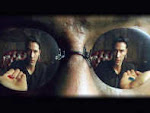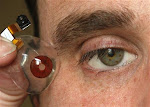 A way of making levitation possible using a mysterious force of nature has been proposed by two British physicists.Their ideas are now being looked at seriously by a leading American scientist who may put them into practice.The theory will not enable people to fly like Peter Pan but could revolutionise nanotechnology and the design of micro-machines.It centres on a phenomenon called the "Casimir force"predicted by quantum physicists in 1948 and first measured in 1997.The force is caused by a strange quirk of nature that at tiny scales allows particles to pop into existence from nowhere.This creates a force that will push two objects placed very close to each other,such as a pair of mirrors,together.Generally the Casimir force has no effect on everyday life and can be ignored.But it is extremely
A way of making levitation possible using a mysterious force of nature has been proposed by two British physicists.Their ideas are now being looked at seriously by a leading American scientist who may put them into practice.The theory will not enable people to fly like Peter Pan but could revolutionise nanotechnology and the design of micro-machines.It centres on a phenomenon called the "Casimir force"predicted by quantum physicists in 1948 and first measured in 1997.The force is caused by a strange quirk of nature that at tiny scales allows particles to pop into existence from nowhere.This creates a force that will push two objects placed very close to each other,such as a pair of mirrors,together.Generally the Casimir force has no effect on everyday life and can be ignored.But it is extremelyimportant when trying to develop tiny switches and micro-machines,since their components tend to stick to each
other.Professor Ulf Leonhardt and Dr Thomas Philbin,from the University of St Andrews in Scotland,have worked out a way of reversing the Casimir force so that it repels instead of attracts. Their discovery could ultimately lead to frictionless micro-machines with moving parts that levitate.Prof Leonhardt said:"The Casimir force is the ultimate cause of friction in the nano-world, in particular in some micro-electromechanical systems."Such systems already play an important role - for example tiny mechanical devices which trigger a car airbag to inflate or those which power tiny 'lab on chip' devices used for drugs testing or chemical analysis.Micro or nano-machines could run smoother and with less or no friction at all if one can manipulate the force."The solution to the Casimir problem is to sandwich a "perfect" lens between two objects. Such lenses, early versions of which have already been made, exhibit "negative refraction" and bend light in the opposite direction from a normal lens.The odd properties of a perfect lens could lead to a reversal of the Casimir effect, say the theoretical physicists.The scientists say there is no likelihood in the foreseeable future of humans being able to levitate."At the moment, in practice it is only going to be possible for micro-objects with the current technology, since this quantum force is small and acts only at short ranges," said Prof Leonhardt."For now, human levitation remains the subject of cartoons, fairytales and tales of the paranormal."
http://www.breitbart.com/article.php?id=paLevitate_mon00_levitation&show_article=1&catnum=0
As in the days of Noah...






















































































.bmp)

























.bmp)